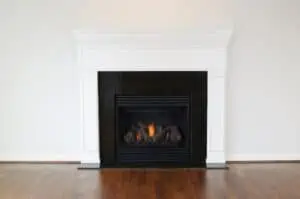How Does a Ventless Propane Fireplace Work?
A ventless propane fireplace is a great alternative to a wood burning fireplace. It’s a clean and efficient energy source. And it’s easy to use. The flames are controlled by a knob and there’s no need for dampers or kindling.
(Searching in Google “Gas Fireplace Repair Near Me“? Contact us today!)

A ventless propane fireplace can be installed anywhere a gas line can be run. However, they do need to be installed by a professional. Some states require a permit and may even outlaw them in small spaces like bedrooms.
While a ventless propane fireplace is an excellent energy source, it also carries some risks. One of these is the release of toxic fumes. Carbon monoxide is the most dangerous gas released by fireplaces. To protect your family, it’s important to install a carbon monoxide detector. This will shut off your fireplace automatically if it detects the gas.
Ventless fireplaces can also increase humidity levels in your home. If you live in a humid area, you might notice condensation appearing on the ceiling or walls. Installing a dehumidifier can help prevent this problem.
A gas-powered ventless unit generates more heat than an electric or a traditional wood-burning fireplace. It’s also a lot cheaper. You can purchase a 13-ounce canister of gel-based fuel for under $30. That’s enough to last for about two and a half hours.
Another safety feature is an oxygen sensor. Most ventless fireplaces come with a sensor that automatically turns off the gas when the oxygen level falls below a certain level.
If you are installing a ventless propane fireplace, make sure you have an electrician or carpenter work on the installation. Having this done professionally can minimize the risk of major safety issues.
Ventless fireplaces are highly regulated by government agencies. Ensure that you follow all of the manufacturer’s instructions. Use caution when using the unit and never touch hot areas. Also, ensure that the fireplace is installed properly.
There are many regulations that you should be aware of. Before installing one, you should ask the manufacturer how long it will take for your home to meet indoor air quality standards. Make sure you’re not operating the unit for more than two hours at a time. Never leave the fireplace running while you’re sleeping.
You’ll also want to have an annual service on the unit. Clean the logs and other components once a year. Using the right chimney sweep can reduce your risk. In addition, don’t allow your children to play near the fireplace. Don’t use scented candles while the fireplace is operating.
Although ventless fireplaces have been shown to lower the risk of carbon monoxide exposure, they do have some drawbacks. They can produce soot, water vapor, and other fumes. These can make your home more humid and can lead to mold and mildew growth.
As with any type of energy source, you should always make sure you are doing your research. Ask your fireplace retailer what the health risks are. Keep in mind that the gas-powered models can be expensive.

